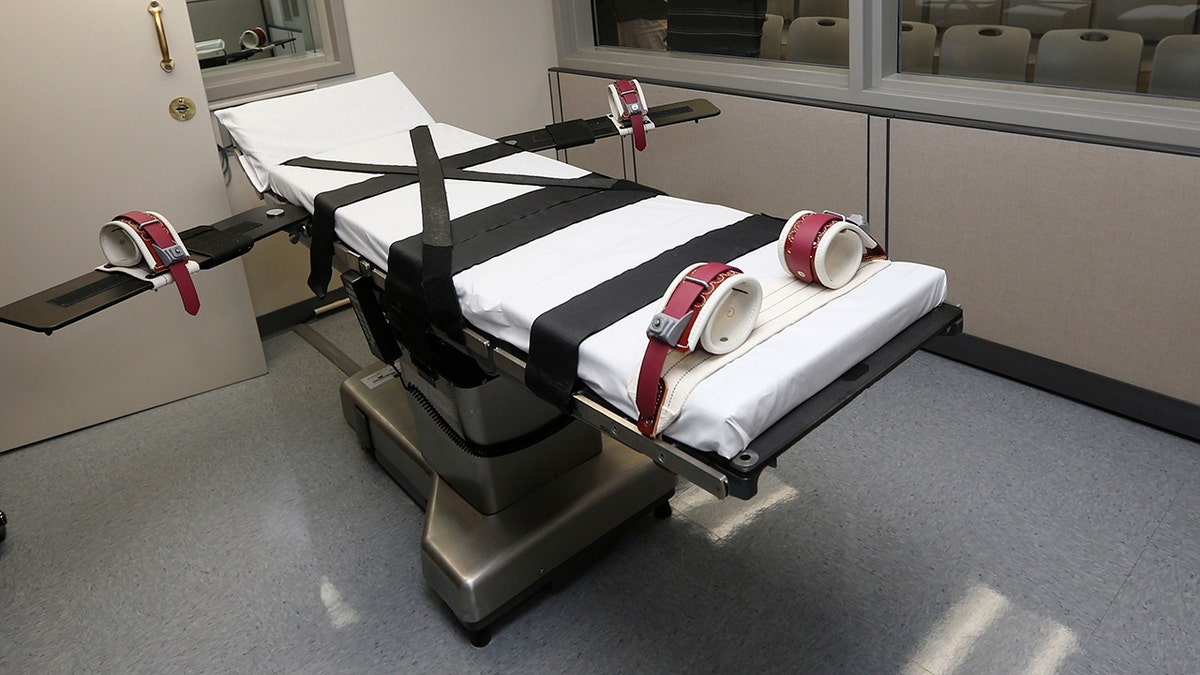Mississippi
As saltwater creeps up a shriveled Mississippi River, could Corps open Old River’s floodgates?

As a wedge of saltwater creeps up the Mississippi River, the U.S. Army Corps of Engineers is considering an unusual tactic: Using the massive Old River Control Structure to reduce the amount of water flowing from the Mississippi into the Red River and the Atchafalaya Basin.
Due to a drought-starved, low-flow river, salt water from the Gulf of Mexico is moving up the Mississippi and now threatens drinking water for more than 1 million people in the New Orleans area. The saltwater wedge is expected to overwhelm Belle Chasse’s, New Orleans’, Gretna’s and Jefferson Parish’s drinking water intakes and have its deepwater leading edge reach the Luling area by the end of October, according to current Corps’ estimates.
Reducing the amount of diversion at Old River would mean more water in the Mississippi, which could help flush the salt back downriver — or so the argument goes.
When the threat first arose weeks ago, Corps officials said they found the shift would have created a whole new set of salt intrusion problems for other drinking water systems in southwestern Louisiana that depend on the Atchafalaya. And they said it could set in motion problems for wildlife and navigation along the Atchafalaya River.
And, they argued, the change would produce little benefit for the Mississippi’s saltwater problem.
But now, water flows in the Red River are rising, an impending rain front in the could dump even more water into the Red River Valley. So the Corps of Engineers is taking a second look at the idea, agency officials said on Monday.
“As we see the contributions of the Red River increase, we will keep evaluating the opportunities to identify benefits, if any, Old River may have on the saltwater intrusion,” Ricky Boyett, a spokesman for the Corps in New Orleans.
The reevaluation will look again at negative impacts in the Atchafalaya Basin and whether the change in water distribution would have an appreciable benefit on the Mississippi.
Boyett cautioned that any proposal to pursue the idea would need review from regional Corps officials beyond the New Orleans district.
“Any insight we gain shall be shared with the Mississippi Valley Division to identify the best path forward that yields the least damaging approach that yields the greatest benefits,” he said.
How it would work
The Old River Control Structure keeps the Mississippi from following Mother Nature’s pent-up desires and changing its course to head down the Atchafalaya River, away from Baton Rouge and New Orleans.
The nearly 60-year-old series of locks, dams, channels and guide levees is located at a key inflection point among the Red, Atchafalaya and Mississippi rivers near the notch in Louisiana’s boot north of Morganza.
The Red empties entirely into and becomes the Atchafalaya just west of the Old River Control Structure. The structure ensures the combined flow of the Mississippi and Red upriver of the structure remains at a 70/30 split in the Mississippi and the Atchafalaya below the control structure.
The structure does this only by diverting water from the normally much bigger Mississippi into the Red and Atchafalaya and does not operate in reverse, Corps officials said.
Faced with temporary pipelines and freshwater barges to keep drinking water available, several readers of The Advocate|The Times-Picayune have been asking why the Corps of Engineers can’t temporarily alter the Old River split and keep more water for the Mississippi to push back the salt wedge.
“Could the flow be temporarily increased during the Intrusion?” one Metairie reader asked Sunday. “We need to think outside the box.”
Boyett said the Corps has faced similar questions in recent weeks as the salt wedge was moving north. He said the potential negative impacts were significant, officials found, when the Red and Atchafalaya were so low a few weeks back.
The Corps’ analysis had found a salt wedge in the Atchafalaya would have affected drinking water for Morgan City, Berwick and Patterson.
The reduced flow in the Atchafalaya would also have created ecological impacts, such as changes in temperature, oxygen and salinity. They would affect protected areas like Henderson Swamp and the Atchafalaya and Sherburne wildlife management areas.
In addition, navigation limits on the Atchafalaya would have been affected. Bayou Teche and the Vermilion River could face problems as well, because they rely on water pumped from the Atchafalaya.
When the Corps produced this earlier analysis, flow in the Red was so low that diversion from the Mississippi was contributing almost 94% of the flow in the Atchafalaya below Old River.
“This wasn’t an option a few weeks ago because the Red River was so low (changing diversion) would have basically dried up the Atchafalaya,” Boyett said.
But the Red’s flow has increased by more than four times since then, rising from 3,000 cubic feet per second to 17,000 cfs.
Under the normal operations of Old River, increased flow from the Red naturally means less diversion from the Mississippi to maintain the 70/30 split between the Mississippi and the Atchafalaya, Boyett said.
That means more water is already being held in the Mississippi than had been occurring a few weeks ago. The Corps’ current task, Boyett said, will be to evaluate what kind of benefit holding additional water in the Mississippi would provide.

Mississippi
‘A Magical Mississippi Christmas’ lights up the Mississippi Aquarium

GULFPORT, Miss. (WLOX) – The Mississippi Aquarium in Gulfport is spreading holiday cheer with a new event, ‘’A Magical Mississippi Christmas.’
The aquarium held a preview Tuesday night.
‘A Magical Mississippi Christmas’ includes a special dolphin presentation, diving elves, and photos with Santa.
The event also includes “A Penguin’s Christmas Wish,” which is a projection map show that follows a penguin through Christmas adventures across Mississippi.
“It’s a really fun event and it’s the first time we really opened up the aquarium at night for the general public, so it’s a chance to come in and see what it’s like in the evening because it’s really spectacular and really beautiful,” said Kurt Allen, Mississippi Aquarium President and CEO.
‘A Magical Mississippi Christmas’ runs from November 29 to December 31.
It will not be open on December 11th, December 24th, and December 25th.
Tickets can be purchased online or at the gate.
The event is made possible by the city of Gulfport and Coca-Cola Bottling Company.
See a spelling or grammar error in this story? Report it to our team HERE.
Copyright 2024 WLOX. All rights reserved.
Mississippi
Mississippi asks for execution date of man convicted in 1993 killing, lawyers plan to appeal case to SCOTUS

Mississippi Attorney General Lynn Fitch, a Republican, is seeking an execution date for a convicted killer who has been on death row for 30 years, but his lawyer argues that the request is premature since the man plans to appeal to the U.S. Supreme Court.
Charles Ray Crawford, 58, was sentenced to death in connection with the 1993 kidnapping and killing of 20-year-old community college student Kristy Ray, according to The Associated Press.
During his 1994 trial, jurors pointed to a past rape conviction as an aggravating circumstance when they issued Crawford’s sentence, but his attorneys said Monday that they are appealing that conviction to the Supreme Court after a lower court ruled against them last week.
Crawford was arrested the day after Ray was kidnapped from her parents’ home and stabbed to death in Tippah County. Crawford told officers he had blacked out and did not remember killing her.
TEXAS LAWMAKER PROPOSES BILL TO ABOLISH DEATH PENALTY IN LONE STAR STATE: ‘I THINK SENTIMENT IS CHANGING’
Mississippi death row inmate Charles Ray Crawford, who was convicted and sentenced to death in 1994 in the 1993 kidnapping and killing of a community college student, 20-year-old Kristy Ray. (Mississippi Department of Corrections via AP)
He was arrested just days before his scheduled trial on a charge of assaulting another woman by hitting her over the head with a hammer.
The trial for the assault charge was delayed several months before he was convicted. In a separate trial, Crawford was found guilty in the rape of a 17-year-old girl who was friends with the victim of the hammer attack. The victims were at the same place during the attacks.
Crawford said he also blacked out during those incidents and did not remember committing the hammer assault or the rape.
During the sentencing portion of Crawford’s capital murder trial in Ray’s death, jurors found the rape conviction to be an “aggravating circumstance” and gave him the death sentence, according to court records.
PRO-TRUMP PRISON WARDEN ASKS BIDEN TO COMMUTE ALL DEATH SENTENCES BEFORE LEAVING

During the sentencing portion of Crawford’s capital murder trial, jurors found his prior rape conviction to be an “aggravating circumstance” and gave him the death sentence. (iStock)
In his latest federal appeal of the rape case, Crawford claimed his previous lawyers provided unconstitutionally ineffective assistance for an insanity defense. He received a mental evaluation at the state hospital, but the trial judge repeatedly refused to allow a psychiatrist or other mental health professional outside the state’s expert to help in Crawford’s defense, court records show.
On Friday, a majority of the 5th U.S. Circuit Court of Appeals rejected Crawford’s appeal.
But the dissenting judges wrote that he received an “inadequately prepared and presented insanity defense” and that “it took years for a qualified physician to conduct a full evaluation of Crawford.” The dissenting judges quoted Dr. Siddhartha Nadkarni, a neurologist who examined Crawford.
“Charles was laboring under such a defect of reason from his seizure disorder that he did not understand the nature and quality of his acts at the time of the crime,” Nadkarni wrote. “He is a severely brain-injured man (corroborated both by history and his neurological examination) who was essentially not present in any useful sense due to epileptic fits at the time of the crime.”

Photo shows the gurney of an execution chamber. (AP Photo/Sue Ogrocki, File)
CLICK HERE TO GET THE FOX NEWS APP
Crawford’s case has already been appealed multiple times using various arguments, which is common in death penalty cases.
Hours after the federal appeals court denied Crawford’s latest appeal, Fitch filed documents urging the state Supreme Court to set a date for Crawford’s execution by lethal injection, claiming that “he has exhausted all state and federal remedies.”
However, the attorneys representing Crawford in the Mississippi Office of Post-Conviction Counsel filed documents on Monday stating that they plan to ask the U.S. Supreme Court to overturn the appeals court’s ruling.
The Associated Press contributed to this report.
Mississippi
Mississippi Highway Patrol urging travel safety ahead of Thanksgiving

The rest of the night will be calm. We’ll cool down into the mid to upper 50s overnight tonight. A big cold front will arrive on Thanksgiving, bringing a few showers. Temperatures will drop dramatically after the front passes. It will be much cooler by Friday! Frost will be possible this weekend. Here’s the latest forecast.
-

 Science1 week ago
Science1 week agoTrump nominates Dr. Oz to head Medicare and Medicaid and help take on 'illness industrial complex'
-

 Politics1 week ago
Politics1 week agoTrump taps FCC member Brendan Carr to lead agency: 'Warrior for Free Speech'
-
/cdn.vox-cdn.com/uploads/chorus_asset/file/25739950/247386_Elon_Musk_Open_AI_CVirginia.jpg)
/cdn.vox-cdn.com/uploads/chorus_asset/file/25739950/247386_Elon_Musk_Open_AI_CVirginia.jpg) Technology1 week ago
Technology1 week agoInside Elon Musk’s messy breakup with OpenAI
-

 Lifestyle1 week ago
Lifestyle1 week agoSome in the U.S. farm industry are alarmed by Trump's embrace of RFK Jr. and tariffs
-

 World1 week ago
World1 week agoProtesters in Slovakia rally against Robert Fico’s populist government
-

 Health4 days ago
Health4 days agoHoliday gatherings can lead to stress eating: Try these 5 tips to control it
-

 News1 week ago
News1 week agoThey disagree about a lot, but these singers figure out how to stay in harmony
-

 Health2 days ago
Health2 days agoCheekyMD Offers Needle-Free GLP-1s | Woman's World




















